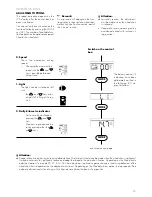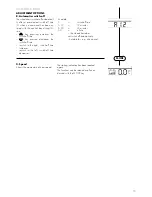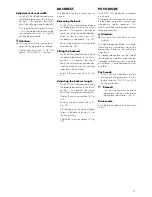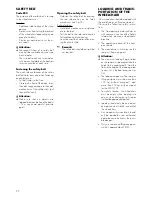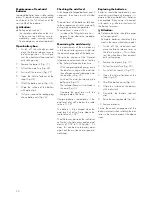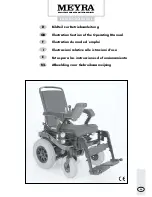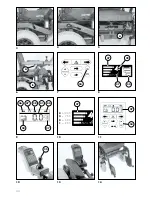
26
Maintenance of lead-acid
batteries
Lead-acid batteries have visible sealing
plugs. A regular battery maintenance
contributes to the full utilisation of the
service life of the batteries.
!
Attention:
Battery acid is caustic!
In event of acid droplets on the skin,
in the eyes or on clothing, rinse im-
mediately under running water.
Seek emergency medical treatment!
Open battery box
1. Switch off the wheelchair and
move the brake release lever to
the "drive" position. – This will pre-
vent the wheelchair from inadvert-
ently rolling away.
2. Remove the legrests (Fig. 17).
3. Pull out the main fuse (Fig. 40).
4. Swivel off the seat unit (Fig. 27).
5. Open the Velcro fastener of the
strap (Fig. 42).
6. Lift off the battery cover (Fig. 43).
7. Wipe the surface of the battery
with a dry cloth.
8. Only ever remove the sealing plug
of one battery cell (Fig.44).
Replacing the batteries:
Batteries should be replaced by your
specialist workshop only because it is
aware of the associated risks. Batteries
can explode if they come into contact
with sparks, e.g. due to a short circuit of
the battery terminals.
!
Attention:
Defective batteries should be prop-
erly disposed of!
Re-usable batteries should only be
used in the same wheelchair model.
1. Switch off the wheelchair and
move the brake release lever to
the "drive" position. – This will pre-
vent the wheelchair from inadvert-
ently rolling away.
2. Remove the legrests (Fig. 17).
3. Pull out the main fuse (Fig. 40).
4. Swivel off the seat unit (Fig. 27).
5. Open the Velcro fastener of the
strap (Fig. 42).
6. Lift off the battery cover (Fig. 43).
7. Wipe the surface of the battery
with a dry cloth.
8. Dismantle the battery terminal
clips.
9. Raise the carrying handle (Fig. 46).
10. Remove batteries.
Ensure the correct arrangement of the
battery terminals when installing the bat-
teries in the reverse order of the above
steps.
Checking the acid level
First charge discharged batteries and, if
necessary, then top up with distilled
water.
The acid level of the batteries falls due
to the evaporation of water, especially
during high ambient temperatures.
The acid level is correct if it is:
– just above the filling hole insert or
– approx. 5 mm above the top edges
of the plates.
Measuring the acid density
The measurement of the acid density
with the acid tester gives an insight into
the actual charge state of the batteries.
Observe the contents of the 'General
information on electrical systems' section
of the 'Safety information' brochure.
– With compressed ball pump, insert
the tube for sucking out the acid into
the cell opening and submerge it into
the acid (as in Fig. 45).
– Suck out the acid by releasing the
ball pump (Fig. 45).
– The indicator float must swim freely in
the acid (Fig. 45).
– Compare the acid level with the
charge scale of the float.
Charge batteries immediately if the
acid level of a cell is below the scale
value of 1.18*.
The battery is fully charged when the
acid levels of all cells are above the
scale value of 1.28*.
The differences between the individual
cell values should not exceed an acid
density of 0.02 to 0.03 kg/dm³. If it
does, this can be due to battery dam-
age. Seek the assistance of a specialist
workshop!


